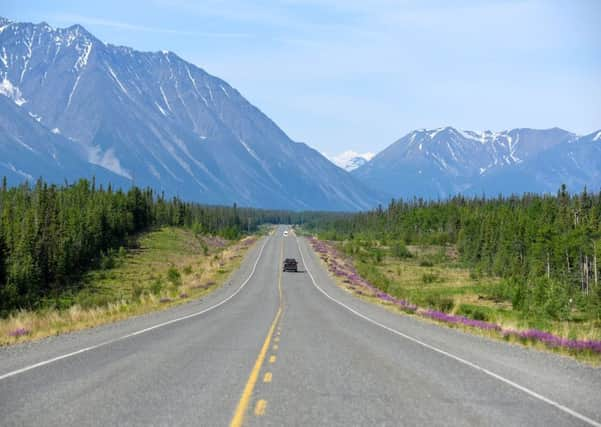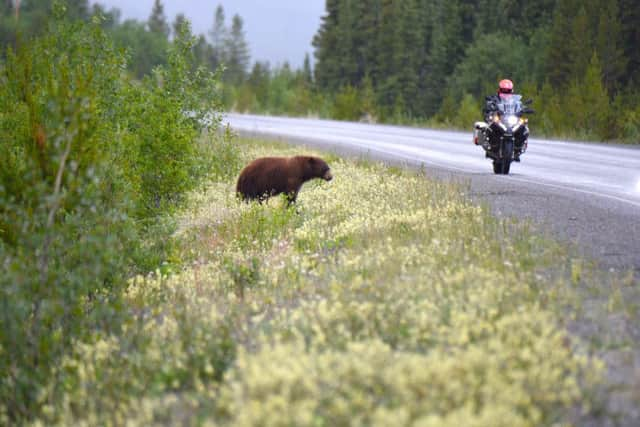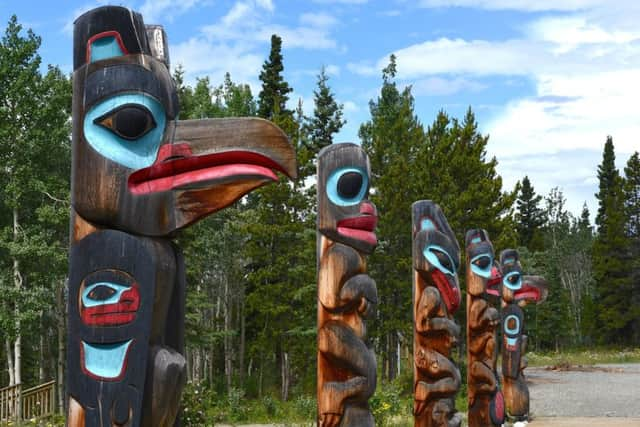Yukon, Canada, a tour of the wilds kicks off with the Adäka First Nations festival


Russian throat singer, Olga Letykai who performed in her traditional costume of heavy reindeer furs, stood sweating under the stage lights.
Moments before we’d shared a joke, but once Letykai began to throat sing this sweet woman seemed possessed by something unearthly. A small, scared child turned to its mother and asked to leave the room.
Advertisement
Hide AdAdvertisement
Hide AdThe word guttural means “of the throat”, and Letykai, apparently in a near-trance, produced pure guttural music, deep, unearthly and powerful.


I was mesmerised by her performance. At first, her tones, created with circular breathing, seemed harsh, but the listener quickly attunes to the beauty and complexity of the many layers of sound, each one perfectly controlled.
I was at Adäka festival in Whitehorse, in Canada’s Yukon Territory. Adäka is a yearly festival celebrating the culture and creativity of all 14 Yukon First Nations indigenous groups, along with international guests. Throughout the festival, there are opportunities to meet and chat with members of First Nations communities.
Letykai was a “circumpolar” guest of the 2018 Adäka. Indigenous people from Greenland, Russia and Sweden were invited to participate, working on exciting collaborations in both visual and performing arts.
Originally from the Kamchatka Peninsula in Siberia, Letykai lives in Switzerland with her husband and her daughter, Alissa Csonka, a trainee throat singer, who watched her mother’s performance with pride. She’s learning the tradition even though she was born and raised in a country more given to yodelling.


Knowledge keepers, cultural presenters, storytellers and performance artists combine to make the festival a rich, immersive experience. It is the premier festival in northern Canada, and will take place at the Kwanlin Dün Cultural Centre in Whitehorse this year from 28 June to 4 July.
Adäka means “coming into the light” in Southern Tutchone, one of eight First Nations languages in Yukon, and it illuminates the skills and talents of local cultures and international guest artists.
Other guests were Nive Nielsen and the Deer Children, an Inuk Greenlandic band who performed folk melodies with a hint of vocal jazz. Also an actress, Nielsen recently appeared in The Terror, an American TV horror drama. She played an Inuit woman called Lady Silence, one of the only female roles in the series.
Advertisement
Hide AdAdvertisement
Hide AdNielsen and her band also collaborated with Canadian First Nations band Diyet & the Love Soldiers to produce a rich improvised acoustic performance of traditionally themed songs which the women wrote together.
The festival features other traditional genres including dancing, drumming and art. The Traditional Knowledge Series presents more than 30 talks, demonstrations, and stories from elders, all with the aim of education and celebrating indigenous culture.
Starr Drynock is a First Nations singer, born and raised in Merit, British Columbia. She moved to the Yukon five and a half years ago. Drynock was inspired to start singing by her aunts and her father, who told her she was a “carrier of songs.” Singing helps her keep in touch with her spiritual and cultural side. She has performed numerous times at the Adäka Cultural Festival, both on her own and with the Dakhka Khwaan Dancers.
Intrigued, I wanted to see the land and wildlife the First Nations people spoke about, the inspiration for the symbolic images they painted in such detail, carved with such care, and sewed so intricately on to their clothing.
I hired a car and drove west along Route 1, the Alaskan Highway, for 90km in search of Kwäday Dän Kenji (the Long Ago Peoples’ Place), between Whitehorse and Haines Junction.
This is an authentic recreation of a traditional First Nations Village, not some tacky tourist attraction. I spent the day stepping back in time with Harold Johnson, a member of the Aishihik First Nation and the Crow clan, and his business partner, Meta Williams, a member of the Little Salmon Carmacks First Nation and the Wolf clan. Walking through the forest learning about Southern Tutchone culture through Johnson’s stories was enthralling.
“All of our history is oral history, and if you are told a story you are not allowed to repeat it until you can say it word for word, the way the elders taught it, because that’s the only way oral history can stay intact,” said Johnson.
We stepped into a winter hut, neatly made of wood, moss and mud, and strong enough to withstand freezing conditions, where Johnson spoke about his culture’s past.
Advertisement
Hide AdAdvertisement
Hide Ad“If we were all born here 200 years ago, we would have been born into our mother’s clan. The first year and a half you would hardly ever leave your mother’s side, so the bond with your mother was super strong from the beginning, and it instilled respect for women,” said Johnson.
“When you became a toddler, your mother could go further without packing the baby, so it was the grandparents and great-grandparents who raised you, and you spent the majority of your toddler life in camps, where your education would start. Being raised by the elders in the camp instilled a lot of respect for them. When you became an adolescent your life would change again.”
We continued our easy drive north along the highway towards Kluane National Park and Reserve, a Unesco World Heritage Site, “an empire of mountains and ice” as someone called it. I spotted a herd of wild horses and plenty of bears grazing for berries along the roadside.
From Whitehorse to the park is 160km. The time taken to get there depends on how often you stop to photograph the wildlife or the untamed, sweeping mountain landscapes.
We returned to Whitehorse and the Best Western Gold Rush Inn, located at the end of Main Street in downtown Whitehorse. This is just a few blocks away from the Kwanlin Dün Cultural Centre, where the festival takes place. The following morning, we bundled into the car and drove south along the highway towards Teslin. This drive, through the Tagish Lake area, part of the headwaters of the majestic Yukon River, offered more stunning mountain views.
I spent a morning visiting the Teslin Tlingit Heritage Centre on Teslin Lake, where I learnt about the rich heritage, history, culture and stories of the Inland Tlingit of the Yukon.
I learned about traditional moose hide tanning, medicinal plants and fishing techniques, and watched a sewing demonstration and a long boat display. Hunting and gathering still play an important role in Teslin culture.
I hadn’t even tried any hiking. Or mountain biking, kayaking or dog sledding. With gold rush history, two thousand glaciers, Canada’s largest non-polar ice field, the Northern Lights and the Midnight Sun, this land offers backcountry adventure to the max.
Advertisement
Hide AdAdvertisement
Hide AdBut to see beneath the adventure, and to get an insight into the traditional heart of this world apart, I’d recommend beginning a trip to the Yukon with the Adäka First Nations Festival.
FACTFILE
Adäka 2019 From the Land Festival, 28 June – 4 July, 2019, adakafestival.ca/festival.
Best Western Gold Rush Inn: www.bestwestern.com
Air Canada from the UK to Vancouver: www.aircanada.com
Air North flies twice daily from Vancouver to Whitehorse. Yukon’s local Airline from Vancouver to Whitehorse is partially owned by the Vuntut Gwitchin First Nation: www.flyairnorth.com.
Condor Airlines: there is a direct flight from Frankfurt to Whitehorse in the summer, www.condor.com.
Driving from Vancouver covers 2,000km and takes about 30 hours without stopping overnight. There are no train connections.
Other useful websites include: TeslinTlingitHeritage.com, longagopeoplesplace.com, whitehorsetours.com, www.pc.gc.ca/en, journeystoadaka.com, cafn.ca/da-ku-cultural-centre/, destinationcarcross.ca